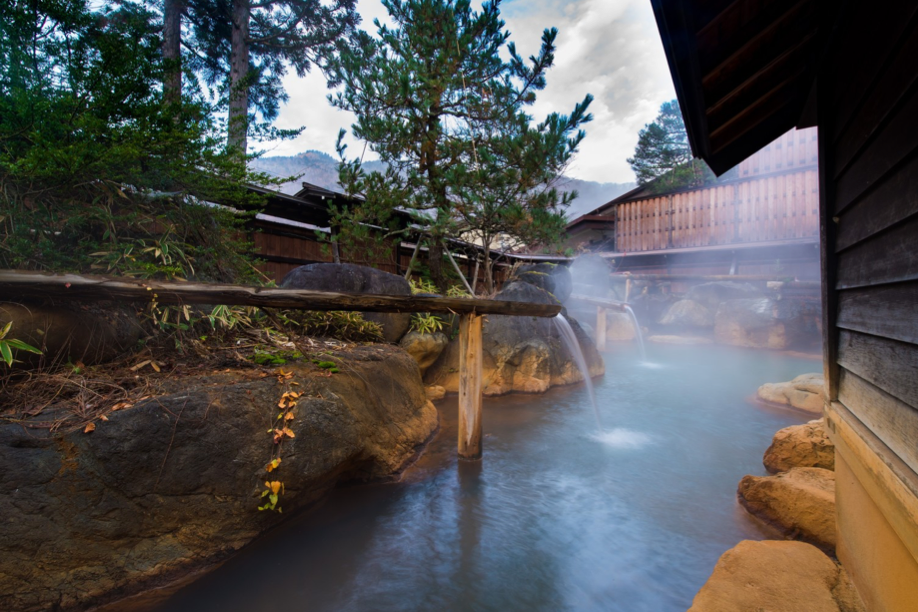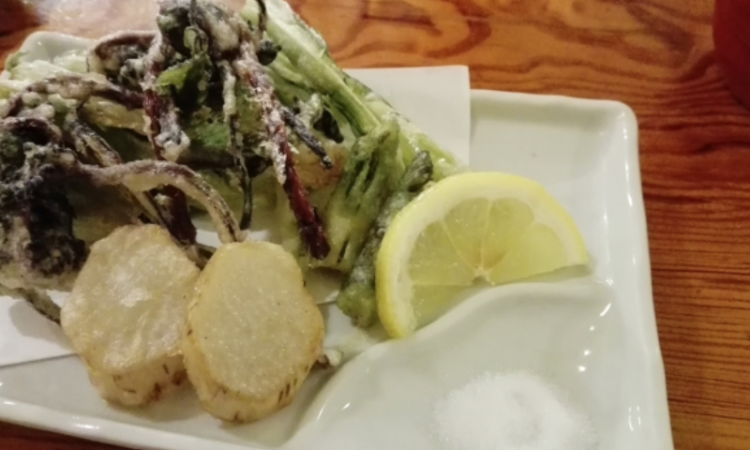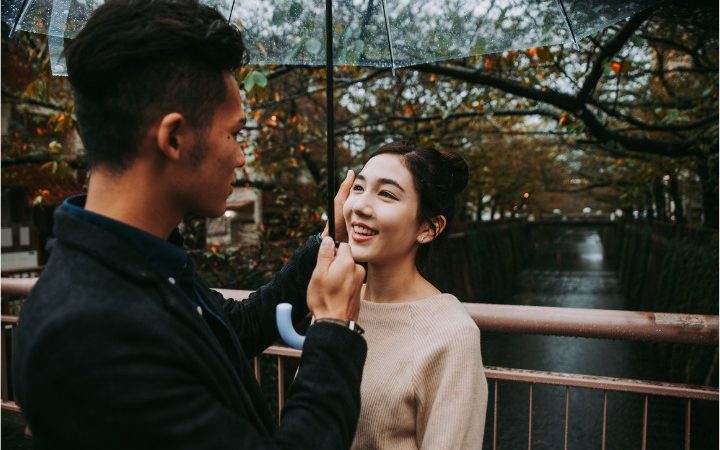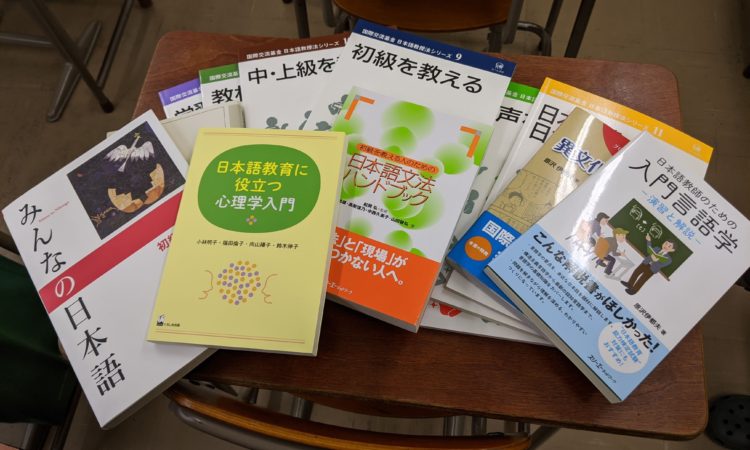If you’ve traveled to Japan, you must have heard of onsen. Not only is it an essential part of the Japanese lifestyle, but also a unique experience!
What is onsen, and Why is it a Popular Tradition?
Onsen is a Japanese natural hot spring. As Japan has a lot of volcanoes, there is a dense “population” of lava streams (approximately 27 thousand) on the ground that heats the springs. Any spring that is more than 25 degrees Celsius can be regarded as an Onsen. Hence, onsens are almost everywhere in the country and popular among people of all ages.
You should definitely travel to Beppu, a city on Oita island in Kyushu prefecture, if you love onsen. Small as it is, Beppu is home to more than 2,300 onsen with various styles and sizes. This is the highest amount of hot spring for a region in the whole nation. Moreover, the water in many spots can reach 42 degrees Celsius. Undoubtedly, we call Beppu the onsen capital.
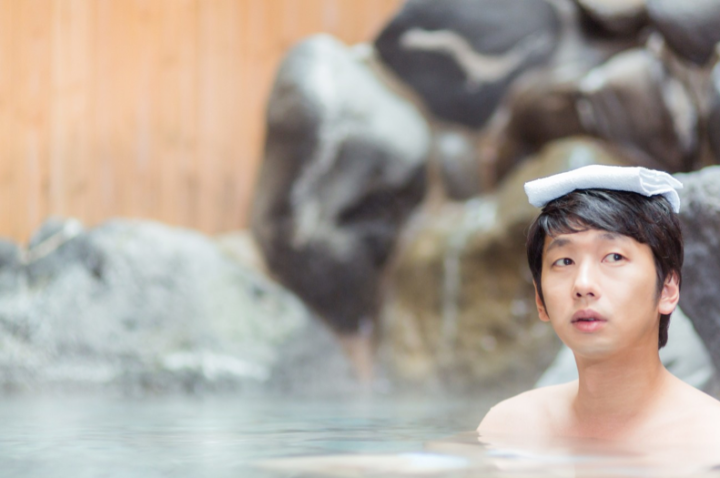
Types of Onsen
The two major types are onsen and sento. While onsen is an outdoor hot spring with naturally heat water, Sento is an indoor hot spring filled with steamed tap water, which is also called a public bath. Mostly, all of them are public-run spots, but there is also a few private onsen.
It is not just about outdoor or indoor that we differentiate the onsens. This natural gift comes in more than ten different styles. One of which is the mud bath. This is a bath offered to women with hot spring deposits. We can also categorize onsen based on the temperature or the minerals in the water.
Interestingly enough, the onsens also come in several colors like milky white, red, green, and even black. The reasons for those are mainly the components inside the water itself. For example, iron is responsible for the reddish-brown color, and sulfur will make the milky water white.
Last but not least, it is very helpful to know that the mixed bathing or co-ed bath, where both sexes share the same pool, is not very common. On the contrary, most onsen are for one gender only, which means men and women will take two separate onsen. Therefore, if you are planning an onsen trip for your family, groups of friends, or couples, you would want to check whether it is mixed bathing or not. Why are the baths separate? You will find the answer soon.
Why Are Onsen so Popular in Japan?
The answer varies, but here are the reasons we have come up with:
The first and most obvious reason is the relaxation time from the onsen. The heat and scenery will surely relieve you from the stress of your daily lives. Imagine soaking in a hot bath and surrounding yourself with nature; how relaxing and refreshing is that? Some locals that live near a hot spring even visit it three times a day! Significantly, in Beppu, they even extend the entertainment from onsen by making steamed eggs and puddings with hot water. The intention is to give you an experience at the onsen with your every sense.
Moreover, your skin will also receive a good amount of minerals from the onsen. Some Japanese even drink onsen water to cleanse the body and take onsen to treat illness or injury. I was also very fascinated to find out more about this topic. They say that the milky white onsen will treat skin disorders and arthritis. While red onsen can alleviate anemia, an alkaline hot spring can increase the femininity of the bathers. Undoubtedly, onsen has always come together with different health benefits since forever.

One of the essential traits of Japanese culture is to appreciate and incorporate with nature. Therefore, it is not surprising how much the practice has been embedded in the Japanese lifestyle. Onsen are not only about bathing in the hot spring; the Japanese usually take onsen while staying in the ryokan. For those who want to dig deeper into this unique culture, it is worth a try for the whole experience, isn’t it? In my opinion, this would be such an unforgettable memory for any foreigner.
Onsen Rules
Yes, it is a place for everyone regardless of their age or nationality. Therefore, to have it clean and safe, there must be some rules we should follow.
Before entering the bath
The first thing to remember: Always make sure to keep everything clean, including yourself! Before coming to the bath areas, you have to undress and take a shower. All of your clothes will be in a locker or a bracket of your own. You have nothing but a clean towel with you after that. Why I have to stress on the towel thing, you may ask. It is because from the shower area to the onsen is the public area. Do you know what it means? Yes, you must be naked, like everyone else. This is why a lot of foreigners are put off to this practice. I, also, was extremely uncomfortable at first as I had never gone naked in front of strangers. But trust me, it takes only a few moments for the anxiety to go away as no one will care to look at you. In the end, nobody thinks about others but the experience they have in the onsen, right? For those who still cannot bear the ideas of having any clothes on in such a public place, you can find yourself an individual bath, too. However, I don’t recommend doing so as you will miss out on such a trait of the onsen.
Secondly, you have to take a thorough shower before entering the public bath which is not a common thing in western countries. Normally, you can have the tub on your own and flush all the water after using it. However, Japanese culture has it differently (the Ofuro culture). Even when you have a bathtub at home, you will have to take a shower before coming into the tub. This way, the water is clean for others to share. It is the same mindset for the onsen. Therefore, when you are at a Japanese hot spring, don’t skip this part!
When entering the bath
There are things you should be careful about when in the bath. First, your hair should not touch the water even though you have just taken a shower. This also applies to the small towel you bring along into the onsen. There might be chances that your hair and the towel still carry infection, so they should not have contact with the water at all. It would be helpful for girls to tie your hair up before going in the bath or you can use the towel to keep the hair from falling, too. Strange as it may be, another precaution is that you cannot swim in the onsen even though the area is large enough for some underwater exercises. This is what I was told not to do in the first time going to an onsen on a school trip. Of course, as your head cannot get wet and not to disturb other bathers, don’t swim in the onsen.
Maybe One Last Rule: Enjoy the Onsen!
Things we don’t do in the onsen
No one wants others to ruin their relaxation time with noise or their drunkenness. Why don’t we give each other what we want? That is the fastest and most effective way to make things better and protect the beauty of our surroundings. Be well-mannered and thoughtful to others by keeping a peaceful atmosphere.
Additionally, you don’t enter the onsen when you have big tattoos. Most places will give you badges to cover up the tattoos so don’t worry if they are not too big. However, if they are over your body, you cannot use the public onsen. Then, just like the ones that don’t want to get naked in public, you may ask for a private bath. You may also ask why the Japanese have such “discrimination” towards tattoos. It would be appropriate to answer by history. The tattoos were a sign of criminals or punishment for such a long time that until now, the stigma has not gone yet. Fortunately, there are some emerging onsen especially serve the customers with tattoos. If you have tattoos yet want to do onsen, it is worth a search for these tattoo-friendly onsens.
Recommended Onsen
An onsen experience will not complete if it does not go together with the ryokan. What is ryokan then? Ryokan is a kind of old Japanese-style hotel with tatami sleeping mats. As most ryokans have open-air onsen, some people use ryokan and onsen as two interchangeable terms but actually, they are not the same. During your stay in the ryokan, they will serve washoku (Japanese style meals) and give you the yukata (Japanese style clothes). These practices will give you a great sense of Japanese life in the past. Together with onsen, you are step-by-step going deeper into the culture of this nation.
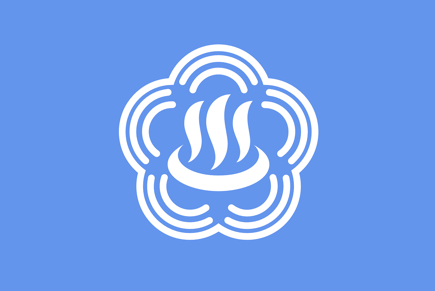
Have you ever seen this mark before? For an onsen fan, you may immediately recognize this symbol. It represents a hot spring destination in Japan. However, the mark may look like “hot food” or “hotpot destination” so it is hard for foreigners to understand. We don’t want to come to a place for hot food, but it turns out to be a hot spring, right? That’s why the government is thinking of changing the symbol for better comprehension. The 2020 Olympics are coming so the Japanese are trying their best to help the visitors to the country. Hopefully, this little tip will guide you faster to the Onsen place!
We have gathered the information about the onsen and known how to spot an onsen on the map. Now before finalizing the plan, let’s think about the money problem. How much are you willing to pay for an onsen day? On average, a visit to a public one costs about 1500 yen or more (depending on the package) and children get half the price. For private onsens, the price is drastically higher, from 4000 yen. Of course, you can find cheaper places, but I would say that in Japan, the experience is always worth the money you spend.
Here are Japan’s Top 3 Onsen Locations
-
Beppu
As mentioned above, the so-called onsen capital, Beppu would be the best option. They say that you can visit 3 onsen of different styles in a day. Besides, the various hot springs offered, you can also try out the sand bath there!
How to get there? From Tokyo, you can take a shinkansen or train (may take a few hours longer) to Kokura Station and transfer to the Sonic limited express train for Beppu. The airway is also available. You will depart from Haneda or Narita airport and arrive at Oita airport which is only 40 minutes by bus away from Beppu.
-
Hakone
If Beppu is too far away, here is your saver. This option is still as good as the former and it is only 1 hour away from Tokyo! You can choose between buses or trains. The services for a 1-day trip to Hakone Onsen are very popular lately. What is so great about Hakone? There is a wide range of unique themed onsen (coffee bath, green tea bath, cave theme or even a luxurious bath). That’s not it, the best thing about Hakone onsen is that you can soak yourself in the hot steam while admiring the beauty of Mt. Fuji right in front of you.
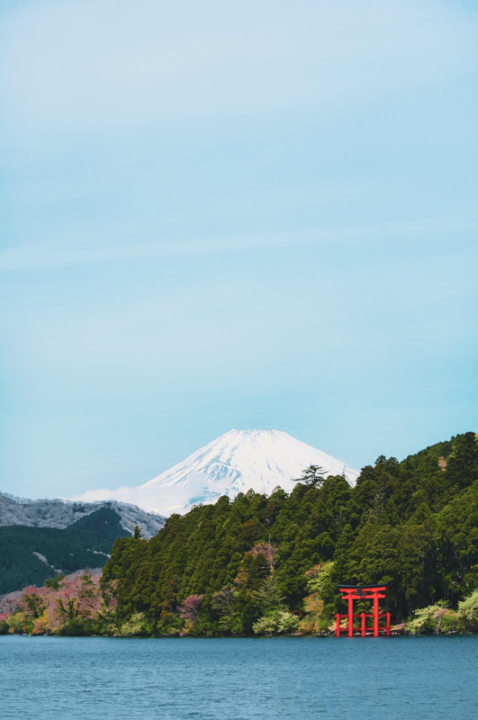
-
Noboribetsu
Noboribetsu is regarded as the best Onsen area in the northern island of Hokkaido. We can find a bunch of colored onsens here. The colors not only represent the minerals and beneficial components in the water but also play an important part in making the scenic view of the place. The fog and colors from the onsen have given the nickname “hell valley” to Noboribetsu. All you have to do is take the JR Tohoku/Hokkaido Shinkansen to Shin-Hakodate-Hokuto, then transfer to the Hokuto Limited Express train to Noboribetsu Station.
Come and visit this spectacular onsen!
Your Favourite Onsen
What are your favourite onsen to visit? Let us know!

